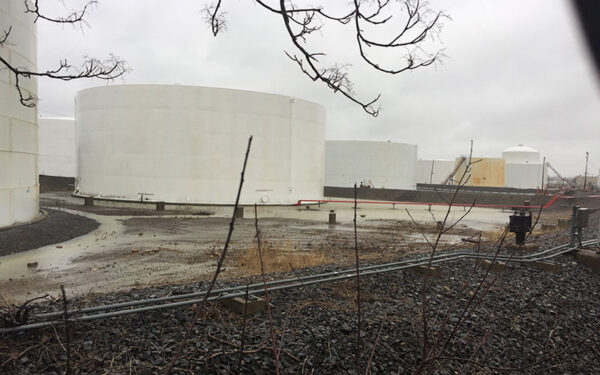New Hampshire is not a huge state. But, it is home to almost 5,000 dams – some active, some in disrepair, and some abandoned. That large number can now be reduced by one. The Great Dam in Exeter is no more. Great Bay is fed by seven freshwater rivers – and now two are without head-of-tide dams.
In 1638, the settlers of Exeter dammed the lower falls of the Exeter River where it becomes the Squamscott – same river, different name – as it travels several miles to enter Great Bay. That very first dam powered a grist mill, and was followed by a second dam at the upper falls to run a sawmill. Exeter thrived. For the next 300 years, the Exeter River produced wealth for the community. The list of products is in some ways a history of early America: linseed oil from flax seed, machine-cut nails, paper, gunpowder, textiles, leather, sailcloth, and sawn lumber for shipbuilding. Unfortunately, while Exeter prospered economically, the local environment did not.
The dams blocked fish passage. Atlantic salmon finally stopped coming. The alewives – emblazoned on the town seal – struggled, and the rainbow smelt had difficulty reaching spawning grounds above the dams. A fish ladder built in the 1950s did not fix the situation. And dissolved oxygen levels in the impoundment above the dam suffered.
Notwithstanding the healthy ecosystem considerations, dam removal is sometimes more about money and safety. Often, the decision to remove a dam is based on the fact that it costs more to maintain or repair a structure than it does to remove it. The NH Department of Environmental Services ascertained in 2000 that the Great Dam would not withstand a 50-year storm event and would need to be replaced or fixed. Eventually, voters – by a 2 to 1 margin – authorized the dam’s removal, saving money in the long run. By October, the Great Dam was gone. Fifteen miles of the Exeter River are free-flowing again for the first time in 378 years!
The Great Dam removal is the second head-of-tide dam to disappear on rivers feeding Great Bayjavascript – another planned in 2018. Greenland’s Winnicut River dam came out a few years ago and a pair of structures on the Bellamy River in Dover are slated for removal in 2018.
Dams powered and built America, but our needs and values are different now. Weighing the pros and cons of keeping or removing them is not a quick and easy process. It takes thoughtful deliberation and money. Water quality and healthy ecosystems are important considerations. And in this case, I know that Great Bay and the spawning fish entering the Squamscott River thank the citizens of Exeter.



